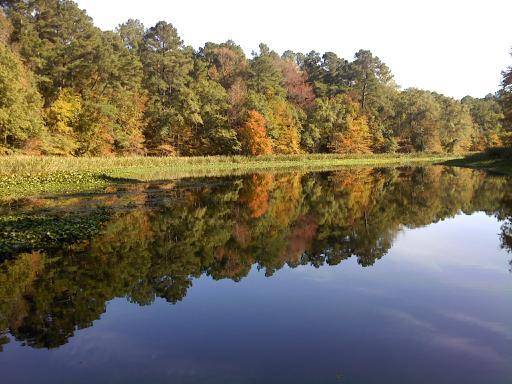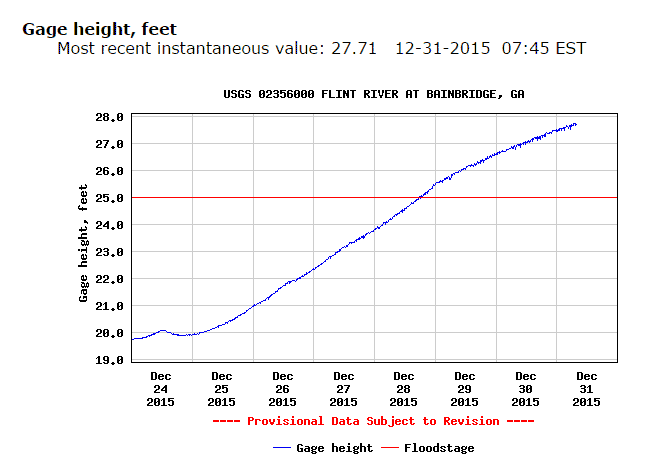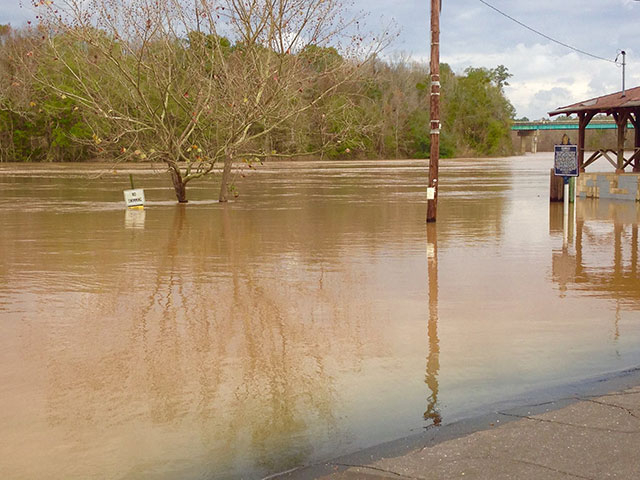
Washington — American Rivers today announced its annual list of America’s Most Endangered Rivers®, naming the Apalachicola-Chattahoochee-Flint River Basin in Alabama, Florida and Georgia the Most Endangered in the country. Outdated water management and rising demand have put the basin at a breaking point.
The water conflict that has gripped the region for almost three decades has come to a head with Florida’s U.S. Supreme Court suit against Georgia and the latest attempt by the U.S. Army Corps of Engineers (USACE) to update its protocols of managing the basin.
American Rivers is calling on the governors of Alabama, Florida and Georgia to swiftly act to form a water-sharing agreement that protects the rivers, and on the USACE to significantly improve water management to sustain river health.
“It’s time to move from water conflict to a new era of cooperation,” said Ben Emanuel of American Rivers. “This basin is ground zero for water supply challenges, but it is also fertile ground for new and sustainable water supply solutions. This Most Endangered River listing is a call to action for all of us to come together to safeguard reliable clean water supplies for today’s communities and future generations.”
Flint River in Bainbridge
More than four million people, including 70 percent of metro Atlanta, rely on the Chattahoochee and Flint rivers for drinking water.
Comprising much of West and South Georgia, the Flint flows over 340 miles to the Georgia and Florida border where it mingles with the Chattahoochee River at Lake Seminole to form the Apalachicola River. The Flint River and associated aquifers provide water for drinking, swimming, fishing, commercial, industrial and agricultural pursuits for in excess of one-million people in the 8,460 square-mile watershed.
The rivers in the basin are so heavily exploited that some run at drought flows even in normal water years. In droughts, some tributary streams are completely dry and many of the Apalachicola’s bottomland sidestreams and sloughs run dry for months at a time. Apalachicola Bay is receiving little
more than life support under existing water management schemes affecting fisheries far out into the Gulf of Mexico. Without reforms, the bay is headed for irreversible ecological collapse.
Throughout the Flint, flows and aquifer dynamics have been profoundly altered. In the upper Flint, low flow conditions are 60 -70% less than historic levels. In Ichawaynochaway Creek, a lower-Flint tributary equal in size to the upper Flint, low flow conditions are routinely 80-100% lower than historic levels. Spring Creek, another major lower-Flint tributary, has not reached the Flint in the last 11 out of 15 years during seasonal lows. The flows of two additional major tributaries of the lower Flint have been affected as well. Resulting mainstem flows in the lower Flint are 40 – 50% less during droughts, and median flows of the upper Flint are 30% less throughout the hydrograph, all year long. In the Dougherty Plain of the lower Flint, aquifer levels have been severely destabilized, a new dynamic that has introduced uncertainty to the region, and directly contributed to the surface flow issues.
The state of GA plays a major role in managing water use in the basin, and the US Army Corps of Engineers plays an important role in managing flows on the Chattahoochee side of the system. A better coordinated approach to water management in the ACF is not only possible, but has already been detailed in a groundbreaking document, a water sharing plan published by ACF Stakeholders, Inc. This 56-member organization of citizens throughout the watershed, representing every conceivable economic sector, plus representatives of local governments, spent over 5 years researching and negotiating a sustainable water management plan which plainly demonstrates the ways and means of stabilizing water management in the ACF. The Governors and the Corps to not have to invent or reinvent a wheel. This particular wheel is ready to roll, and can be implemented before the next drought hits.
“The regions’ recent rains won’t solve the problem of chronic mismanagement and excessive water use,” said Emanuel.
“By applying the best available science and with stakeholder involvement, we can stop the recurring ecological and economic damage to the Apalachicola River, floodplain and Bay and the communities that are sustained by them. We can reverse this disastrous trend in the ACF system and recover the ecological functions of the Apalachicola without compromising Georgia’s water supply, if we act together, now,” said Dan Tonsmeire of Apalachicola Riverkeeper.
“While the metro Atlanta region has made significant strides in water conservation, we are far from reaching our true conservation potential. All river users must pursue aggressive water conservation measures to ensure that we are using these precious water resources as wisely as possible,” said Jason Ulseth of Chattahoochee Riverkeeper.
“After experiencing the decline of so many amazing river systems like those of the Chesapeake Bay, Everglades and Colorado River, we have to be smart enough not to repeat the same mistakes. Litigation and political campaigning are the least effective ways to manage water so that it is sustainable for future generations,” said Gordon Rogers of Flint Riverkeeper. “The three states and the Army Corps must use the best available science and stakeholder involvement to resolve this issue. The citizens of the ACF basin have already provided solutions for this regional problem. The Army Corps, the Governors and Congress should take a signal from the citizens, and work together to solve the problem.”
“The naming of the ACF Basin to this list from American Rivers further emphasizes the critical need for Alabama to complete the development of a sustainable Alabama Water Plan,” said Mitch Reid, program director for Alabama Rivers Alliance. “Further, we must truly engage our neighbors to protect our shared water resources.”
The annual America’s Most Endangered Rivers® report is a list of rivers at a crossroads, where key decisions in the coming months will determine the rivers’ fates. Rivers are chosen for the list based on the following criteria: 1) The magnitude of the threat, 2) A critical decision-point in the coming year and 3) The significance of the river to people and nature.
Over the years, the report has helped spur many successes including the removal of outdated dams, the protection of rivers with Wild and Scenic designations and the prevention of harmful development and pollution.
America’s Most Endangered Rivers® of 2016:
#1: Apalachicola-Chattahoochee-Flint River Basin (Alabama, Florida, Georgia)
Threat: Outdated water management
#2 #2: San Joaquin River
(California)
Threat: Outdated water management
#3: Susquehanna River (Pennsylvania, Maryland)
Threat: Harmful dam operations
#4: Smith River (Montana)
Threat: Mining
#5: Green-Duwamish River (Washington)
Threat: Outdated water management
#6: Pee Dee River (North Carolina)
Threat: Harmful dam operations
#7: Russell Fork River (Virginia, Kentucky)
Threat: Mountaintop removal mining
#8: Merrimack River (New Hampshire, Massachusetts)
Threat: Polluted runoff
#9: St. Lawrence River (New York)
Threat: Harmful dam operations
#10: Pascagoula River (Mississippi, Alabama)
Threat: New dams
###
American Rivers protects wild rivers, restores damaged rivers, and conserves clean water for people and nature. Since 1973, American Rivers has protected and restored more than 150,000 miles of rivers through advocacy efforts, on-the-ground projects, and an annual America’s Most Endangered Rivers® campaign. Headquartered in Washington, DC, American Rivers has offices across the country and more than 200,000 members, supporters, and volunteers.
Rivers connect us to each other, nature, and future generations. Find your connections at AmericanRivers.org, Facebook.com/AmericanRivers, and Twitter.com/AmericanRivers.
The mission of the Flint Riverkeeper® (FRk) is to restore and preserve the habitat, water quality, and flow of the Flint River for the benefit of current and future generations and dependent wildlife. FRk is a fully-licensed member of the Waterkeeper Alliance, an EarthShare of Georgia member group and participates in the Georgia Water Coalition.
Find out more about Flint Riverkeeper at flintriverkeeper.org, Twitter.com/flintkeeper and facebook.com/SavetheFlint.




Nestle is taking the water and private wells are empty